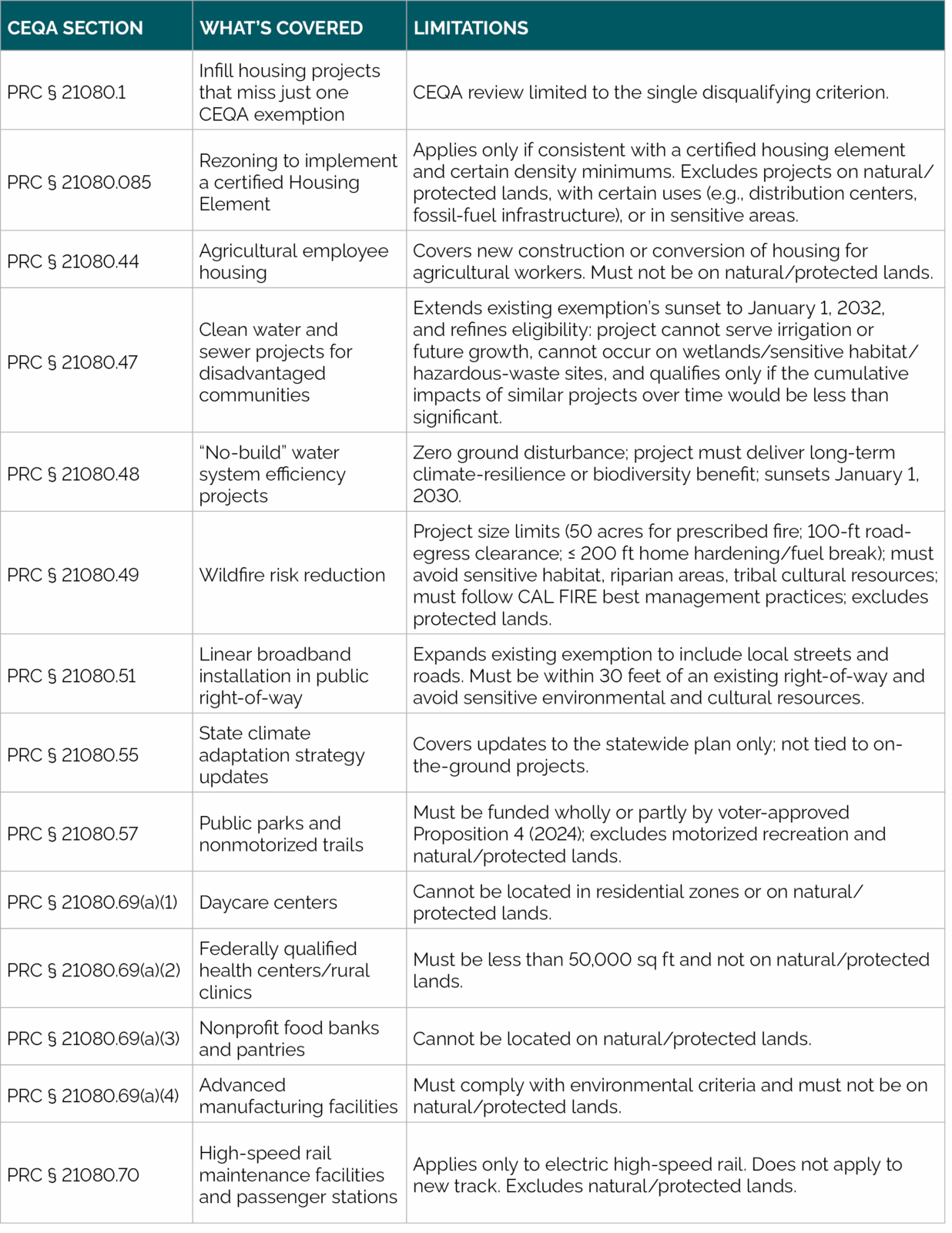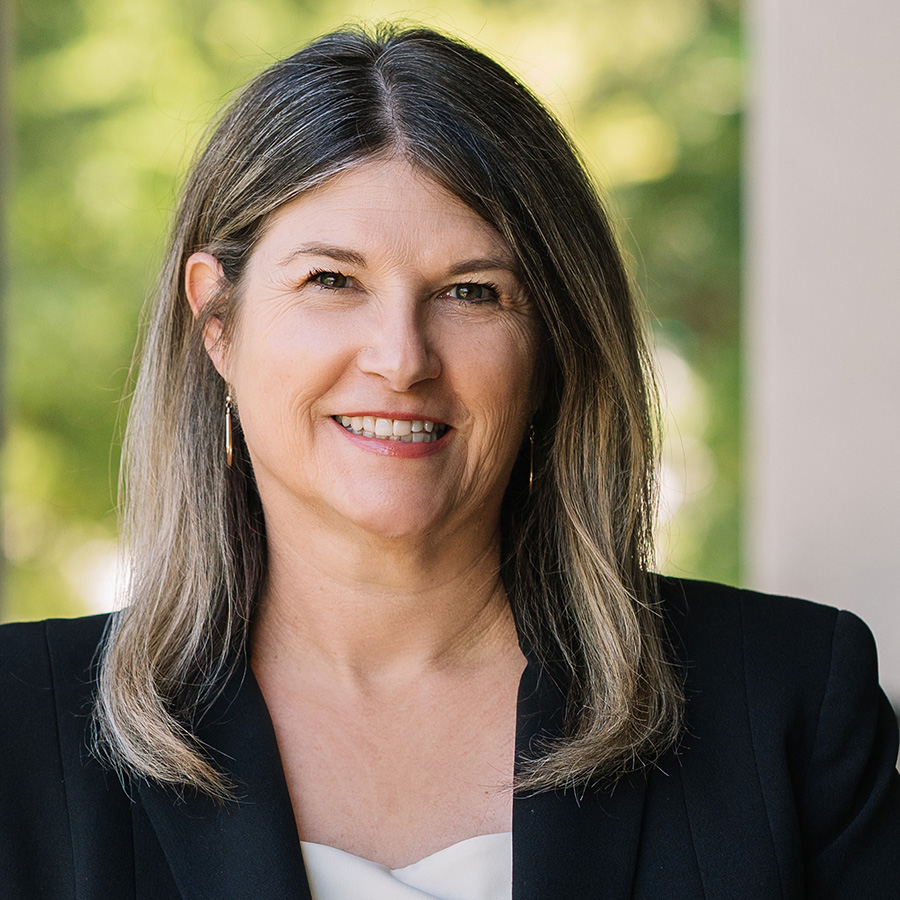The finalization of California’s 2026 Fiscal Year budget on June 30, 2025, did more than establish the State’s spending and revenue plans for the next 12 months; it delivered arguably the most sweeping overhaul of the California Environmental Quality Act (CEQA) since the State Supreme Court’s 1972 Friends of Mammoth decision that extended the landmark environmental law to apply to all projects requiring discretionary permits.
Gov. Gavin Newsom’s signing of Assembly Bill (AB) 130 and Senate Bill (SB) 131 exempt nearly all infill housing and a broad range of public service projects. Both bills were tied to the budget as “trailer bills,” which made their passage a requirement to move the budget forward. After extensive debate, both measures—championed by advocates for accelerated housing development—passed with overwhelming bipartisan support (AB 130: 67‑0 in Assembly and 28‑5 in Senate; SB 131: 50‑3 in Assembly and 33‑1 in Senate) and will take effect immediately. Here’s a breakdown of the new laws.
AB 130
Introduced by Assemblymember Jesse Gabriel (D-Encino), with language based on an earlier bill introduced by Assemblymember Buffy Wicks (D‑Berkeley), AB 130 builds on earlier streamlining statutes (SB 375, SB 35) and the Class 32 categorical exemption to create a near‑blanket CEQA exemption for urban infill housing that meets objective planning standards and the following criteria:
- Projects must not be located in “natural and protected lands,” very-high fire-hazard severity zones, hazardous-waste sites, prime farmland, and floodways
- Lot size must be capped at 20 acres for most projects, with Builder’s Remedy projects remaining capped at 5 acres
- Site must be previously developed or at least 75 percent surrounded by urban development within a quarter-mile radius
- Projects must meet half of the “Mullin densities” specified in SB 375
- Must be consistent with local zoning, general plan, and specific plan standards
- Prevailing-wage and skilled-and-trained workforce requirements apply to high-rise and 100% affordable projects
- The law also creates a 60-day ministerial “shot clock” for qualifying permits, requiring local agencies to approve or deny eligible applications within 60 days of receiving a complete submission. The review is strictly ministerial, limited to verifying compliance with objective standards and leaving no room for discretionary denial. If the agency fails to act within the 60-day window, the project may be automatically approved under state law.
SB 131
Introduced by Sen. Scott Wiener (D-San Francisco), SB 131 establishes nine CEQA exemptions, including the “near‑miss” provision that grants a partial exemption to housing projects that meet all but one criterion for an exemption and environmental review is limited to that single issue—eliminating the need for a full environmental impact report (EIR). Details on that exemption and others that were established or extended are included in the following table.

The new laws introduce several important process changes to CEQA administration. Routine staff email strings and marginal notes are now presumptively excluded from the administrative record, which is expected to reduce litigation costs and delays by narrowing the scope of documents that can be used in CEQA lawsuits. Additionally, the Governor’s Office of Land Use & Climate Innovation (GO-LCI) is required to publish a statewide map of eligible urban infill sites by July 1, 2027. This map will be updated biennially and will help clarify where streamlined CEQA exemptions apply, with a public process for comment and revisions.
What happens next?
Cities and counties must update their CEQA tiering ordinances and internal permitting workflows to comply with the new requirements. This includes implementing the 60-day ministerial approval clock for AB 130–eligible housing projects and applying limited-scope environmental review for “near-miss” projects under SB 131. The California Natural Resources Agency is expected to begin formal rulemaking to update CEQA Guidelines in accordance with the new laws, with draft guidelines anticipated in early 2026 to provide direction on implementation—especially for agencies seeking clarity on sensitive lands, tribal engagement, and zoning consistency. Interested parties should closely monitor litigation, as environmental justice groups have already signaled possible challenges to the advanced-manufacturing exemption and the definition and mapping of “natural and protected lands.” Ultimately, how courts interpret and enforce the new statutory language will determine the practical impact of these changes for project sponsorship.
ESA is actively monitoring the dynamic policy landscape and is here to advise and support our clients as we adapt to changing processes and priorities. Do you have questions about your project and want to speak with an ESA CEQA expert? Reach out to Meredith Parkin for more information, and be sure to subscribe to our newsletter for timely regulatory updates.








